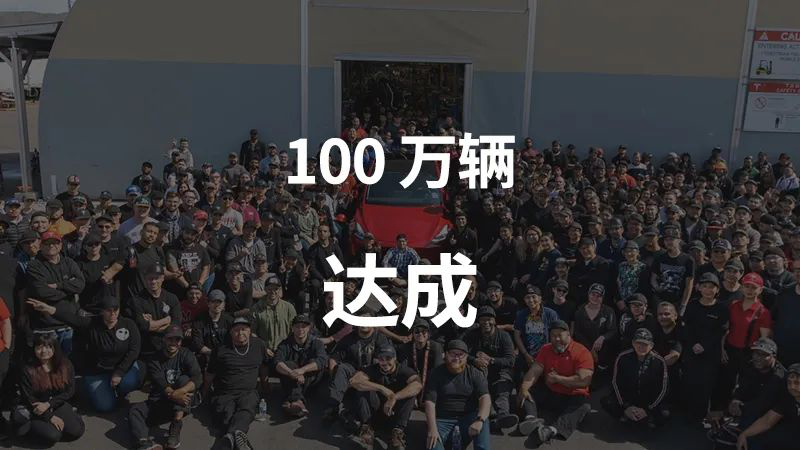A Historic Moment For Tesla: Celebrating 1 Million Electric Cars Produced
On March 10, 2020, on an ordinary day, a red Model Y Performance – a purely electric vehicle – rolled off the production line at Tesla’s Fremont factory, marking the production of Tesla’s 1 millionth car, and the production of 1 million purely electric vehicles since the company’s inception.
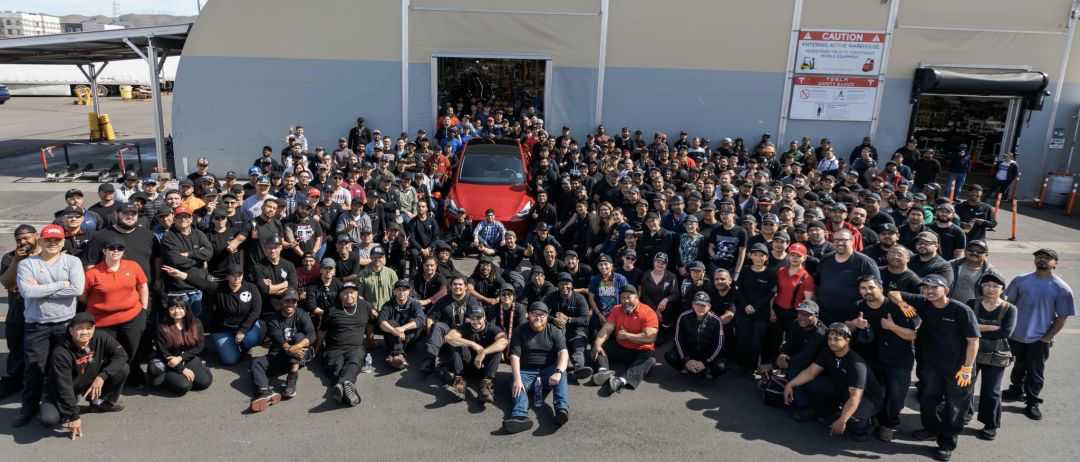
Elon Musk, CEO of Tesla, tweeted nonchalantly, “Congratulations Tesla team on making our 1,000,000th car!!”, along with two casual pictures.
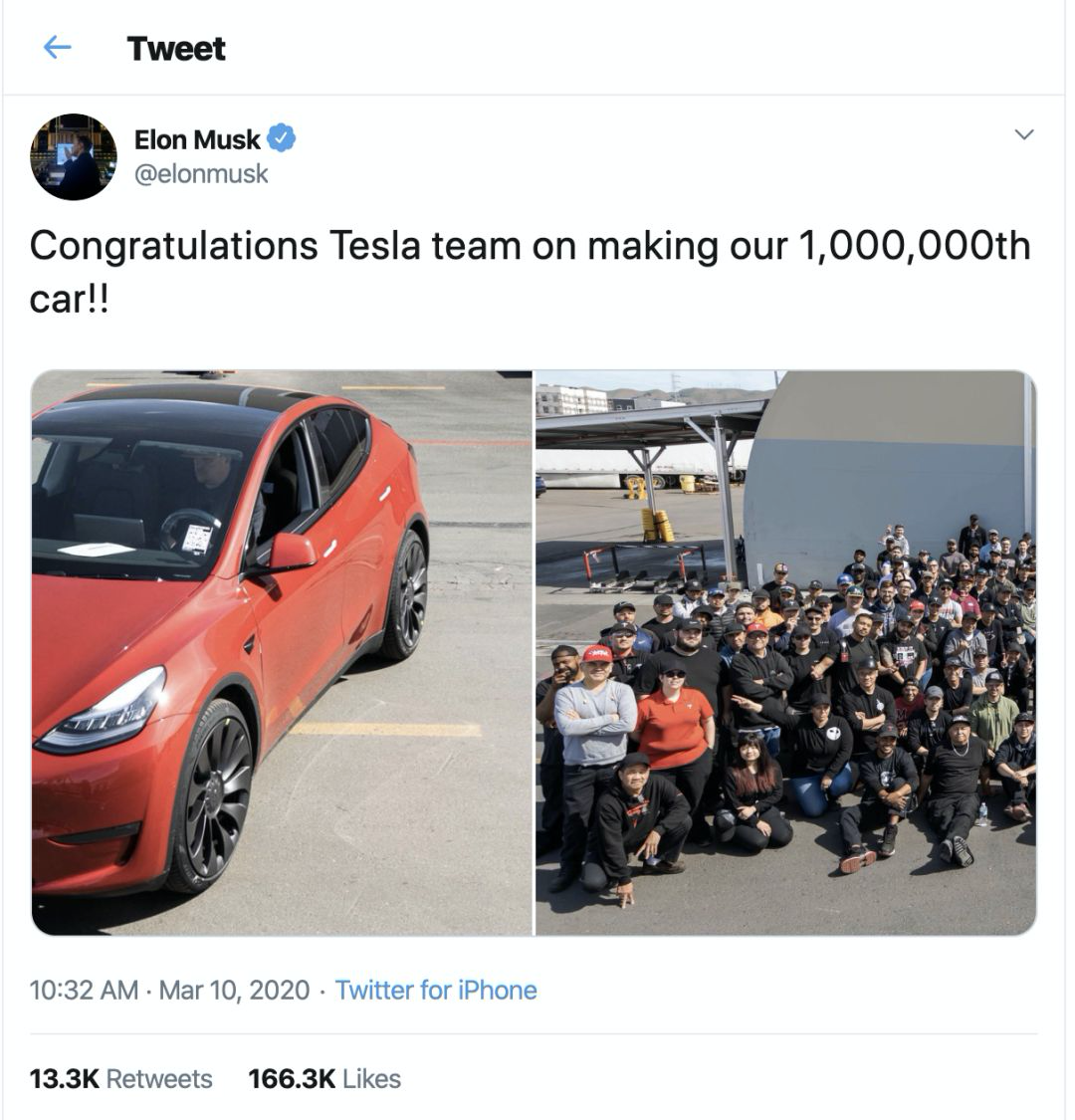
Musk knows that the next milestone will come even faster.
Behind The 1 Million Cars
It took Tesla 16 years to achieve the milestone of producing its 1 millionth electric car – an unprecedented accomplishment in the electric vehicle industry. If we compare this accomplishment to the gas car industry, what does it mean?
Ford, the founder of the modern assembly line, was established in 1903 and took 12 years to reach 1 million cars in 1915.
Toyota, the world’s highest-valued automaker, was established in 1935 and took 27 years to produce 1 million vehicles in 1962.
I admit that the economic environment in which Tesla achieved its 1 millionth car is vastly different from that of Toyota, General Motors, or Ford. However, when we think about it, Tesla’s 1 millionth car represents not just a new brand’s milestone but the first 1 million “smart electric vehicles” produced in this new category.
It took Tesla 16 years to reach this milestone in this new era.
In July 2004, Tesla’s founding team used a Lotus Elise platform to create Mule 1 – the first prototype of the Roadster – by fitting it with Tesla’s electric powertrain. This became Tesla’s first electric vehicle production.
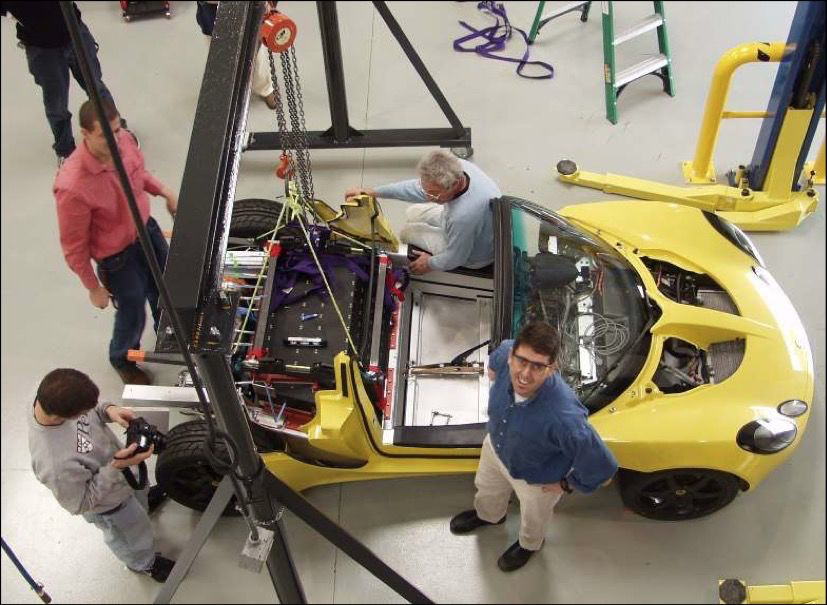

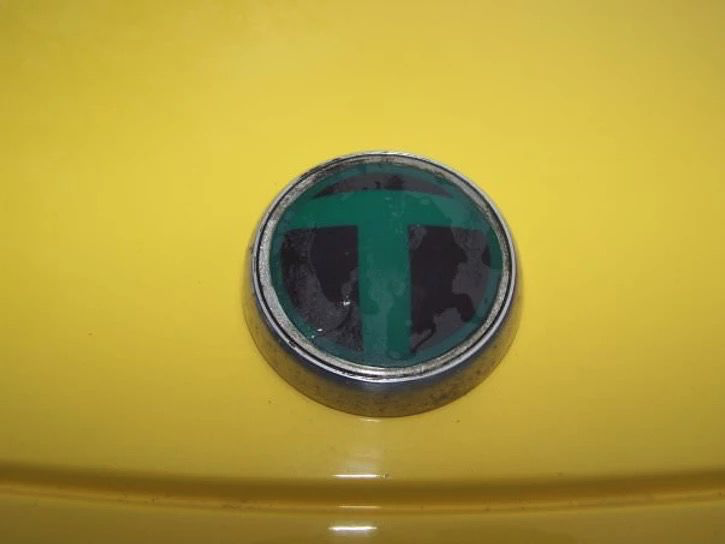
There is strong suspicion that the logo of Hammer Phone was inspired by Tesla.
In the fourth quarter of 2007, Roadster started mass delivery, which was Tesla’s first production car brand. Until the official cessation of Roadster, a total of 2450 cars were delivered.
In 2012, Tesla’s second car Model S came out, and according to Elon’s plan, this is a pure electric vehicle with a broader audience. With the support of performance and intelligence, Model S achieved a delivery volume of 2650 in the first year of its launch in 2012, exceeding the sales volume of Roadster’s entire life cycle.
In 2013, Model S became a new toy for California tycoons, and the delivery volume soared to 22,477, which was also the first time Tesla’s brand delivery volume had exceeded ten thousand.
In the next three years, Tesla had only two cars, Model S and Model X, and maintained an annual growth of more than 20,000. According to this growth rate, Tesla could not achieve the goal of 1 million units until 2022.
However, in 2016, Model 3 came out, carrying the banner of sales. In just two years, it doubled Tesla’s brand sales volume. Among the 367,000 deliveries in 2019, Model 3 accounted for 235,000 units.
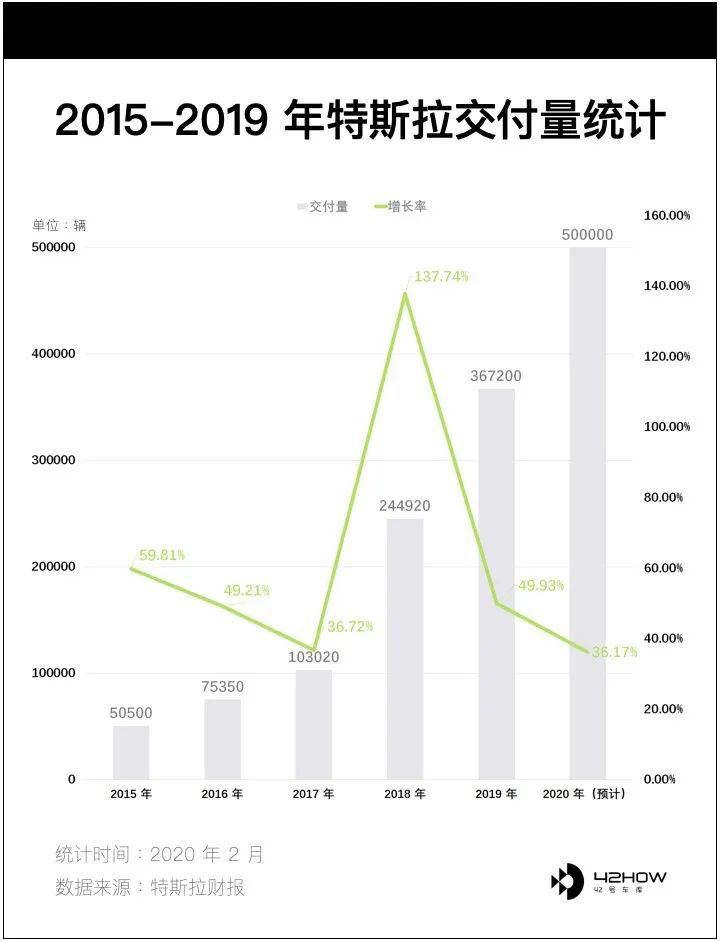
About this historic moment of Model 3, I believe many people are already familiar with it, and I will not elaborate on it.
It is foreseeable that with the mass delivery of Model Y, Tesla’s constantly decreasing price, constantly improving product power, constantly expanding cognitive circles, and constantly improving production capacity, the milestone of an annual output of 1 million units is just around the corner.
Today, Reuters reported that according to documents submitted by Tesla to the Shanghai government, Tesla hopes to increase the supporting production capacity of its cooling pipe from 150,000 to 260,000, indicating that the Shanghai plant has already begun to prepare for higher production capacity.
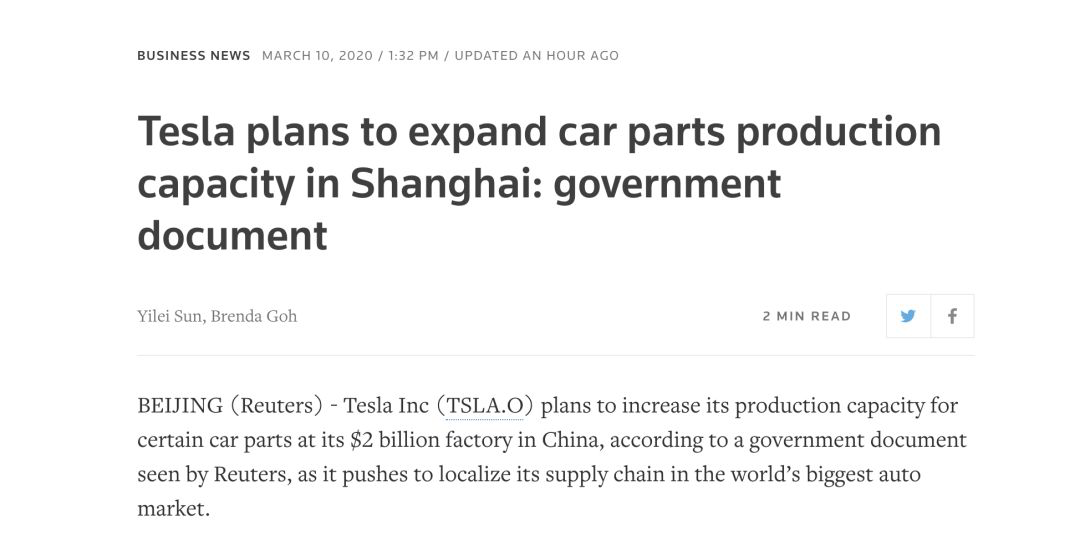 ## The Meaning of Tesla’s 1 Million Vehicles
## The Meaning of Tesla’s 1 Million Vehicles
The achievement of 1 million vehicles by Tesla has a positive significance for the entire market.
Under increasing strict emissions regulations, Tesla has paved the way for all traditional fuel vehicles, proving the feasibility of battery energy storage with its own sales volumes. This is Tesla’s inspiring contribution to the energy sector of the automotive industry.
On March 3, BMW officially released the third model of the i series, the BMW i4 concept car, a pure electric vehicle with a WLTP range breakthrough of over 600 kilometers at the Geneva Motor Show.
On March 4, on the EV Day of General Motors, CEO Mary Barra announced that GM will invest over 20 billion US dollars in the next 5 years in the fields of electric vehicles and autonomous driving. At the same time, GM also released the third-generation modular and scalable electric platform BEV3, with a plan to achieve sales of 1 million pure electric vehicles in 2025.
In addition, Tesla has also led a revolution in automotive electronic and electrical architectures.
After dismantling Tesla, a well-known Japanese business publication concluded that Tesla is 6 years ahead of Volkswagen and Toyota in electronic equipment, especially with the HW 3.0 chip. The Japanese automotive engineers who participated in the dismantling admitted that they cannot achieve such advanced computing power for autonomous driving chips.
After analyzing the electronic and electrical architectures of Volkswagen and Tesla, “Cold Cucumber”, an electric and electrical architecture engineer, reached a conclusion that even Volkswagen’s latest MEB platform has a 0.5 generation gap compared to the Model 3.
With Tesla’s strong leadership, electrification and intelligence are increasingly recognized by more automakers and have become global trends. The achievement of 1 million vehicles by Tesla is very significant, but there are also some negative signals in this market.
Two Cold Water Splashes
Although Tesla’s sales volumes are far ahead of their competitors, both in terms of total volume and growth, with the delivery volume being 245,000 vehicles in 2018 and 367,000 vehicles in 2019, a 50% increase compared to the previous year.
However, when looking at the entire industry, the market seems to lack vitality. The delivery volume of global new energy vehicles was 2.018 million in 2018 and 2.209 million in 2019, with a growth rate of only 9.64%.
If we exclude the additional volume of Tesla, which was 122,000 vehicles in 2019, the growth rate of new energy vehicles in 2019 was only a meager 3.41%.The low growth rate is due to the continuous reduction of subsidies for new energy vehicles in China and the United States. In other words, without the stimulus of subsidies, except for a few brands such as Tesla, consumers are still in the stage of false demand for new energy vehicles.
This is worth thinking about for all participants and car companies that are about to enter the new energy field. Why does this market only recognize Tesla?
“Behind these one million units is a brand new era that Tesla fought for. It is also a new era for the entire industry. It is too exhausting for one person to support an entire sky. This sky cannot be supported by just Tesla alone.”
Finally, let’s pour some cold water on Tesla. As a car company established in 2004, I often don’t know which category to put Tesla in. Are you a newcomer to car manufacturing? You have been struggling for 16 years. Are you an old car company? Compared with car companies with a history of hundreds of years, you seem too young.
However, when you achieve these one million units, I want to put you in the category of a traditional car company. Not only is your sales volume increasing and your scale getting larger, but also the user group that considers you is becoming larger.
A wider circle means higher sales volume, but it also means more demanding and caring users.
Coincidentally, at the time when Tesla achieved 1 million units, the Ministry of Industry and Information Technology issued a document to interview Tesla (Shanghai) Co., Ltd. for the problem of illegal installation of HW 2.5 components in some Tesla Model 3 vehicles, and ordered Tesla to rectify the relevant regulations immediately.
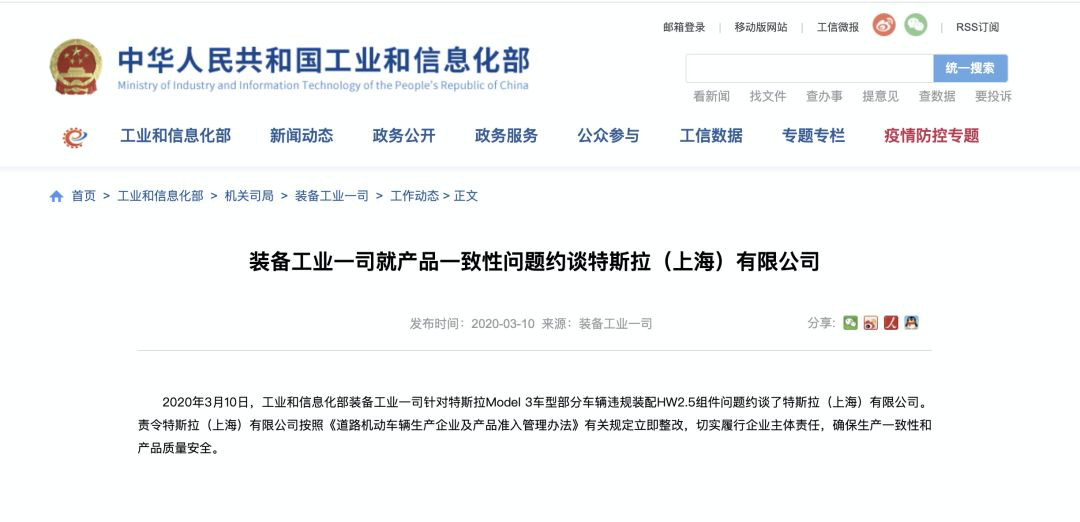
“In the previous 16 years, in order to maintain production efficiency and increase output, ‘details’ and ‘mistakes’ could be sacrificed, but it is different now. If you want to continue to expand, you must pay attention to consumer feedback.”
There are many ups and downs behind achieving these one million units, but after achieving these one million units, more challenges and choices that need to be weighed are faced.
Achieving the goal of one million units, looking forward to a higher future.
This article is a translation by ChatGPT of a Chinese report from 42HOW. If you have any questions about it, please email bd@42how.com.
